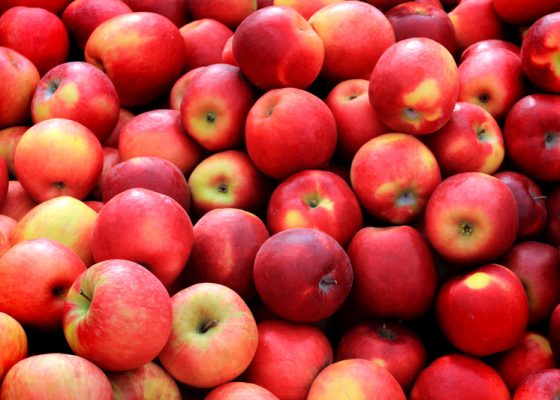
By Anthony Miller
Sano di Pietro was one of the most prolific and successful Sienese painters, the head of a workshop that satisfied the demands of civic and religious institutions in the city as well as those of private devotion. His production, technically always of a very fine quality, rich in decorative effects, and characterized by a brilliant palette, often contains motifs that appear monotonous and repetitive. Although in 1428 he was already listed in the guild of Sienese painters, his work is well documented in its various stages only from 1444 (Gesuati polyptych) until his year of death (Pietà, Monte dei Paschi collection in Siena, 1481), whereas the question of his early activity is still open for discussion.

Esteemed in the nineteenth century literature as a sort of Fra Angelico of Sienese painting and considered by some a typical representative of Sienese quattrocento mysticism, Sano is much less appreciated by twentieth-century criticism. In 1931 Bernard Berenson called him “the most monotonous, the most spiritless, the most vapid” of the city’s artists,[3] and almost all twentieth-century scholars feel that his production after the Gesuati polyptych of 1444 (Pinacoteca Nazionale, Siena, no. 246), which remains his earliest certain work, bears witness to a gradual but inexorable decline in his creative imagination and artistic capability.
In reality Sano’s development in the decades around the mid-century, marked by numerous dated works, is in no way lacking in paintings of high quality. Particularly fine examples are his miniatures, notably those done for the Opera della Metropolitana in Siena from 1445, for the monks of Monte Oliveto Maggiore between 1459 and 1463, for the Spedale della Scala in Siena, and for the duomo of Pienza around 1462. But also in other kinds of painting–a fresco for the office of the Biccherna in Siena; in 1448 the predella of the altarpiece for the chapel in Palazzo Pubblico; in 1449 the Scrofiano polyptych (Sinalunga; now in the Pinacoteca in Siena, no. 255); in 1456 the Pope Callixtus III (Pinacoteca, Siena, no. 241); in 1458 the polyptych in San Giorgio at Montemerano (Grosseto); in 1462 the altarpiece for the duomo of Pienza–the artist reveals gifts of narrative fantasy and chromatic freshness, although his manner remains deeply rooted in the habits and tastes of early Renaissance painting in Siena and appears little inclined toward renewal.
Along with works on a monumental scale, he produced numerous small panels, in response to the religious needs of a wide audience, and particularly to the spiritual tendencies represented in the Franciscan observance movement promoted by Saint Bernardino and the Sienese order of the Gesuati.
The proposal to identify the works of his youth as those gathered under the conventional name of the Master of the Osservanza, which, having the triptych dated 1436 in the Basilica dell’Osservanza in Siena as their point of departure, cover the period from the third decade of the century to 1444, has been rejected by many scholars, who prefer to consider the author of the 1436 triptych and works with similar characteristics an artist quite distinct from Sano, mainly because of their generally very fine quality. In 2002, however, Miklós Boskovits (author of the NGA systematic catalogue entries associated with the artist) is inclined, along with several other scholars, to accept the hypothesis first proposed by Berenson and Brandi identifying the Master of the Osservanza as the young Sano.
In his long and prolific career Sano di Pietro produced an impressive number of paintings, today scattered among he world’s leading museums.

The panels The Massacre of the Innocents, The Adoration of the Magi, and two others probably formed the predella of an altarpiece, probably that of the “Purification of the Virgin” formerly in the cathedral of Massa Marittima. The pictures, from about 1470, are typical of Sano’s popular, conservative approach to painting, appreciated by the Franciscan order.

This panel was part of a predella consisting of five scenes from the life of the Virgin. The predella was commissioned in 1448 from Sano di Pietro for an existing altarpiece in the Capella dei Signore in the Palazzo Pubblico in Siena. It is assumed that this altarpiece is identical with that painted by Simone Martini around 1326, and now dispersed in various collections.
The predella consist of the following scenes:
Birth of the Virgin (University of Michigan Museum of Art, Ann Arbor)
Presentation of the Virgin at the Temple (Pinacoteca Vatican, Rome)
Return of the Virgin (Lindenau-Museum, Altenburg)
Marriage of the Virgin (Pinacoteca Vaticana, Rome)
Assumption of the Virgin (Lindenau-Museum, Altenburg)
In the lower part of the Assumption of the Virgin, St Thomas is depicted in a strongly reduced scale. He is kneeling before the open tomb to receive the miraculous girdle of the Mother of God.
Sano di Pietro | Madonna of Mercy


The Virgin of Mercy is a subject in Christian art, showing a group of people sheltering for protection under the outspread cloak of the Virgin Mary. It was especially popular in Italy from the 13th to 16th centuries, often as a specialised form of votive portrait, and is also found in other countries and later art, especially Catalonia and Latin America. In Italian it is known as the Madonna della Misericordia (Madonna of Mercy).
The oldest extant version is a small 13th Century piece by Duccio. The most famous example is The Madonna della Misericordia or The Polyptych of Misericordia, an altarpiece by Piero della Francesca in the Pinacoteca Comunale of Sansepolcro. Usually the image, whether in sculpture or painting, stands by itself, but in the Madonna della Misericordia altarpiece in Sansepolcro by Piero della Francesca, of 1445-62, the subject is the central panel of a large altarpiece, with a smaller Crucifixion above it, and many other panels.
the Virgin shelters a group of nuns, including two novices with uncovered head.

Saint Bernardino preaching in Siena before the Palazzo Publico. He is using a prop, a painting of the Name of Jesus inscribed in the Sun, a vision he claimed to have seen. Notice how the congregation is segregated between men and women.
Preachers frequently played major roles as unofficial influential powers in Florence and abroad. Long before Savonarola’s famous regime, the preachers had enormous influence on the politics and culture of Florence. Saint Bernardino of Siena and Saint Antonine influenced popular opinion greatly across class lines, which in turn, shaped government policy.
The Franciscan monk Saint Bernardino of Siena (1380 -1444) was, during his lifetime, one of the most successful and popular preachers in Italy.? He often gave sermons to audiences that were so large that they could not be accommodated within churches.? On many occasions he preached outside in squares and marketplaces, from pulpits especially constructed for him as appears in this picture.

Says The Met of this work: With their faces gently pressed together, the interaction between the Virgin and Christ Child evokes a tender intimacy. This compositional motif appears in numerous works by Sano di Pietro and his workshop (for example, in another painting in the Lehman Collection, 1975.1.51). Sano was a popular and highly prolific Sienese painter and illuminator, whose workshop produced numerous devotional images of the Madonna and Child, frequently shown in bust-length. The close stylistic affinities between works attributed to Sano and the enigmatic Sienese artist known as the Osservanza Master may indicate that they represent a single artistic identity. It is also possible that the paintings attributed to the Osservanza Master are the product of a collaborative workshop to which these artists belonged. It has been suggested that the present panel may have been painted by one of Sano’s pupil’s, the Sienese artist Francesco di Giorgio, following the compositional model of his master.

Says The Met of this work: With his right hand, Saint Francis opens the plain brownish-gray habit of his monastic order to reveal the wound in his side, which along with those on his hands, represent the marks of the stigmata, the wounds of the crucified Christ which were miraculously imprinted on his hands, feet, and side. This panel and another in the Lehman Collection, which depicts a similar figure of San Bernardino (1975.1.46), originally belonged the same (unidentified) altarpiece complex, and likely appeared at the base of the pilasters. The two Lehman panels resemble the pilaster panels of the triptych painted by Sano di Pietro in the Basilica of San Bernardino all’Osservanza in Siena.
Sano was a popular and highly prolific Sienese painter and illuminator. The close stylistic affinities between works attributed to Sano and the enigmatic Sienese artist known as the Osservanza Master (so-named after the above-mentioned triptych in the Osservanza in Siena) may indicate that they represent a single artistic identity. It is also possible that the paintings attributed to the Osservanza Master are the product of a collaborative workshop to which these artists belonged.
Original publication: Art in Tuscany






Cancel anytime


Using our website
You may use the The Middle Land website subject to the Terms and Conditions set out on this page. Visit this page regularly to check the latest Terms and Conditions. Access and use of this site constitutes your acceptance of the Terms and Conditions in-force at the time of use.
Intellectual property
Names, images and logos displayed on this site that identify The Middle Land are the intellectual property of New San Cai Inc. Copying any of this material is not permitted without prior written approval from the owner of the relevant intellectual property rights.
Requests for such approval should be directed to the competition committee.
Please provide details of your intended use of the relevant material and include your contact details including name, address, telephone number, fax number and email.
Linking policy
You do not have to ask permission to link directly to pages hosted on this website. However, we do not permit our pages to be loaded directly into frames on your website. Our pages must load into the user’s entire window.
The Middle Land is not responsible for the contents or reliability of any site to which it is hyperlinked and does not necessarily endorse the views expressed within them. Linking to or from this site should not be taken as endorsement of any kind. We cannot guarantee that these links will work all the time and have no control over the availability of the linked pages.
Submissions
All information, data, text, graphics or any other materials whatsoever uploaded or transmitted by you is your sole responsibility. This means that you are entirely responsible for all content you upload, post, email or otherwise transmit to the The Middle Land website.
Virus protection
We make every effort to check and test material at all stages of production. It is always recommended to run an anti-virus program on all material downloaded from the Internet. We cannot accept any responsibility for any loss, disruption or damage to your data or computer system, which may occur while using material derived from this website.
Disclaimer
The website is provided ‘as is’, without any representation or endorsement made, and without warranty of any kind whether express or implied.
Your use of any information or materials on this website is entirely at your own risk, for which we shall not be liable. It is your responsibility to ensure any products, services or information available through this website meet your specific requirements.
We do not warrant the operation of this site will be uninterrupted or error free, that defects will be corrected, or that this site or the server that makes it available are free of viruses or represent the full functionality, accuracy and reliability of the materials. In no event will we be liable for any loss or damage including, without limitation, loss of profits, indirect or consequential loss or damage, or any loss or damages whatsoever arising from the use, or loss of data, arising out of – or in connection with – the use of this website.
Last Updated: September 11, 2024
New San Cai Inc. (hereinafter “The Middle Land,” “we,” “us,” or “our”) owns and operates www.themiddleland.com, its affiliated websites and applications (our “Sites”), and provides related products, services, newsletters, and other offerings (together with the Sites, our “Services”) to art lovers and visitors around the world.
This Privacy Policy (the “Policy”) is intended to provide you with information on how we collect, use, and share your personal data. We process personal data from visitors of our Sites, users of our Services, readers or bloggers (collectively, “you” or “your”). Personal data is any information about you. This Policy also describes your choices regarding use, access, and correction of your personal information.
If after reading this Policy you have additional questions or would like further information, please email at middleland@protonmail.com.
PERSONAL DATA WE COLLECT AND HOW WE USE IT
We collect and process personal data only for lawful reasons, such as our legitimate business interests, your consent, or to fulfill our legal or contractual obligations.
Information You Provide to Us
Most of the information Join Talents collects is provided by you voluntarily while using our Services. We do not request highly sensitive data, such as health or medical information, racial or ethnic origin, political opinions, religious or philosophical beliefs, trade union membership, etc. and we ask that you refrain from sending us any such information.
Here are the types of personal data that you voluntarily provide to us:
As a registered users or customers, you may ask us to review or retrieve emails sent to your business. We will access these emails to provide these services for you.
We use the personal data you provide to us for the following business purposes:
Information Obtained from Third-Party Sources
We collect and publish biographical and other information about users, which we use to promote the articles and our bloggers who use our sites. If you provide personal information about others, or if others give us your information, we will only use that information for the specific reason for which it was provided.
Information We Collect by Automated Means
Log Files
The site uses your IP address to help diagnose server problems, and to administer our website. We use your IP addresses to analyze trends and gather broad demographic information for aggregate use.
Every time you access our Site, some data is temporarily stored and processed in a log file, such as your IP addresses, the browser types, the operating systems, the recalled page, or the date and time of the recall. This data is only evaluated for statistical purposes, such as to help us diagnose problems with our servers, to administer our sites, or to improve our Services.
Do Not Track
Your browser or device may include “Do Not Track” functionality. Our information collection and disclosure practices, and the choices that we provide to customers, will continue to operate as described in this Privacy Policy, whether or not a “Do Not Track” signal is received.
HOW WE SHARE YOUR INFORMATION
We may share your personal data with third parties only in the ways that are described in this Privacy Policy. We do not sell, rent, or lease your personal data to third parties, and We does not transfer your personal data to third parties for their direct marketing purposes.
We may share your personal data with third parties as follows:
There may be other instances where we share your personal data with third parties based on your consent.
HOW WE STORE AND SECURE YOUR INFORMATION
We retain your information for as long as your account is active or as needed to provide you Services. If you wish to cancel your account, please contact us middleland@protonmail.com. We will retain and use your personal data as necessary to comply with legal obligations, resolve disputes, and enforce our agreements.
All you and our data are stored in the server in the United States, we do not sales or transfer your personal data to the third party. All information you provide is stored on a secure server, and we generally accepted industry standards to protect the personal data we process both during transmission and once received.
YOUR RIGHTS/OPT OUT
You may correct, update, amend, delete/remove, or deactivate your account and personal data by making the change on your Blog on www.themiddleland.com or by emailing middleland@protonmail.com. We will respond to your request within a reasonable timeframe.
You may choose to stop receiving Join Talents newsletters or marketing emails at any time by following the unsubscribe instructions included in those communications, or you can email us at middleland@protonmail.com
LINKS TO OTHER WEBSITES
The Middle Land include links to other websites whose privacy practices may differ from that of ours. If you submit personal data to any of those sites, your information is governed by their privacy statements. We encourage you to carefully read the Privacy Policy of any website you visit.
NOTE TO PARENTS OR GUARDIANS
Our Services are not intended for use by children, and we do not knowingly or intentionally solicit data from or market to children under the age of 18. We reserve the right to delete the child’s information and the child’s registration on the Sites.
PRIVACY POLICY CHANGES
We may update this Privacy Policy to reflect changes to our personal data processing practices. If any material changes are made, we will notify you on the Sites prior to the change becoming effective. You are encouraged to periodically review this Policy.
HOW TO CONTACT US
If you have any questions about our Privacy Policy, please email middleland@protonmail.com
The Michelin brothers created the guide, which included information like maps, car mechanics listings, hotels and petrol stations across France to spur demand.
The guide began to award stars to fine dining restaurants in 1926.
At first, they offered just one star, the concept was expanded in 1931 to include one, two and three stars. One star establishments represent a “very good restaurant in its category”. Two honour “excellent cooking, worth a detour” and three reward “exceptional cuisine, worth a
Thank you for your participation,
please Log in or Sign up to Vote

123Sign in to your account